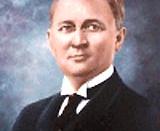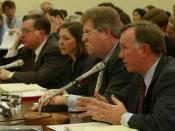The Enron Company began in 1985 when, Internorth, a pipeline company based in Omaha Nebraska, bought Houston-based Houston Natural Gas. At the time the distribution chain of natural gas was highly regulated by the government. Enron and other companies rallied against this and soon the distribution was deregulated. As this was taken place slowly, the natural gas market became more efficient, but also much less predictable. Because of the market instability, the producers and the utility companies were uncomfortable entering into long-term, fixed contracts. Therefore, most natural gas transactions were done in 30 day contracts.
This is when Enron transforms itself into a different company. Around 1990, Enron started acting as a liaison, or market maker, for the 30 day contracts, called the Gas Bank. Enron would gather many of these contracts from different producers and then offered long-term, fixed price contract to local utility companies. In essence, Enron was putting the risk upon itself, for a fee.
This was the turning point for Enron and for the entire natural gas market.
By the year 2000, Enron had branched out and was serving as a liaison for electricity, oil, and even paper. In February of 2001, Enron was named in Fortune magazine as the most innovative company in America for the sixth straight year in a row. Enron experienced rises and falls just like other companies, but what happened in October 16, 2001, made Enron one of the most extensive and most high-priced accounting scandals of all time.
That year Enron released its third quarter earnings; it was released by the press as recurring, net income of 393 million dollar, up from last year's earnings of just 292 million. The problem was that Enron's CEO, Kenneth Lay, after emphasizing Enron's "continued excellent prospects" failed to explain the company 1 billion...


